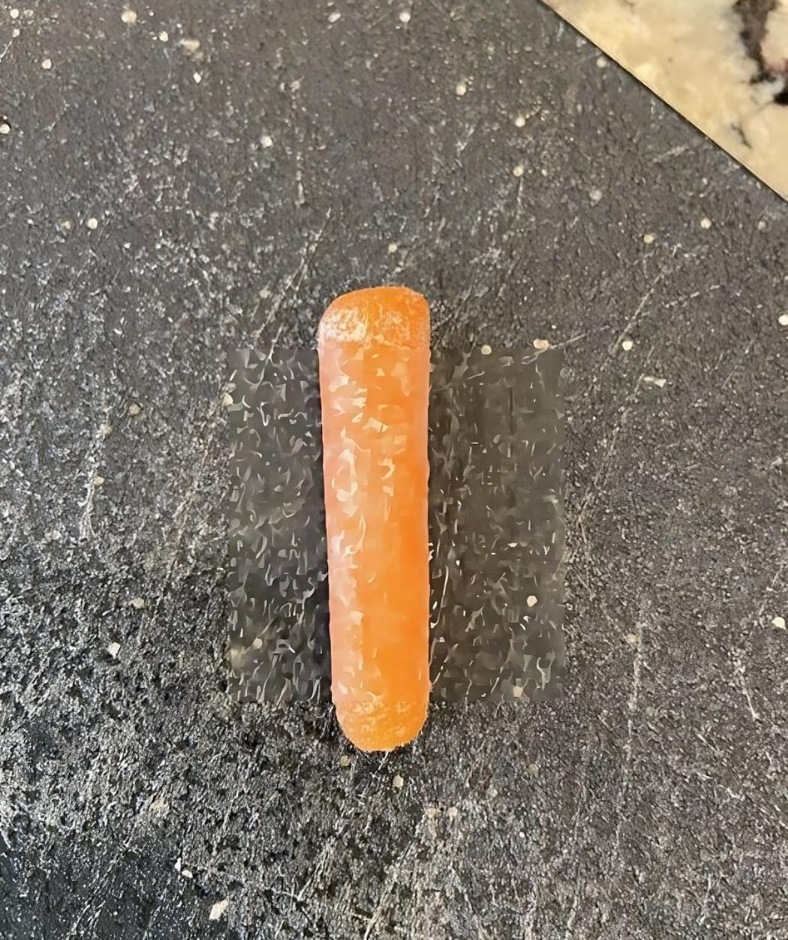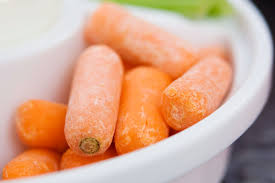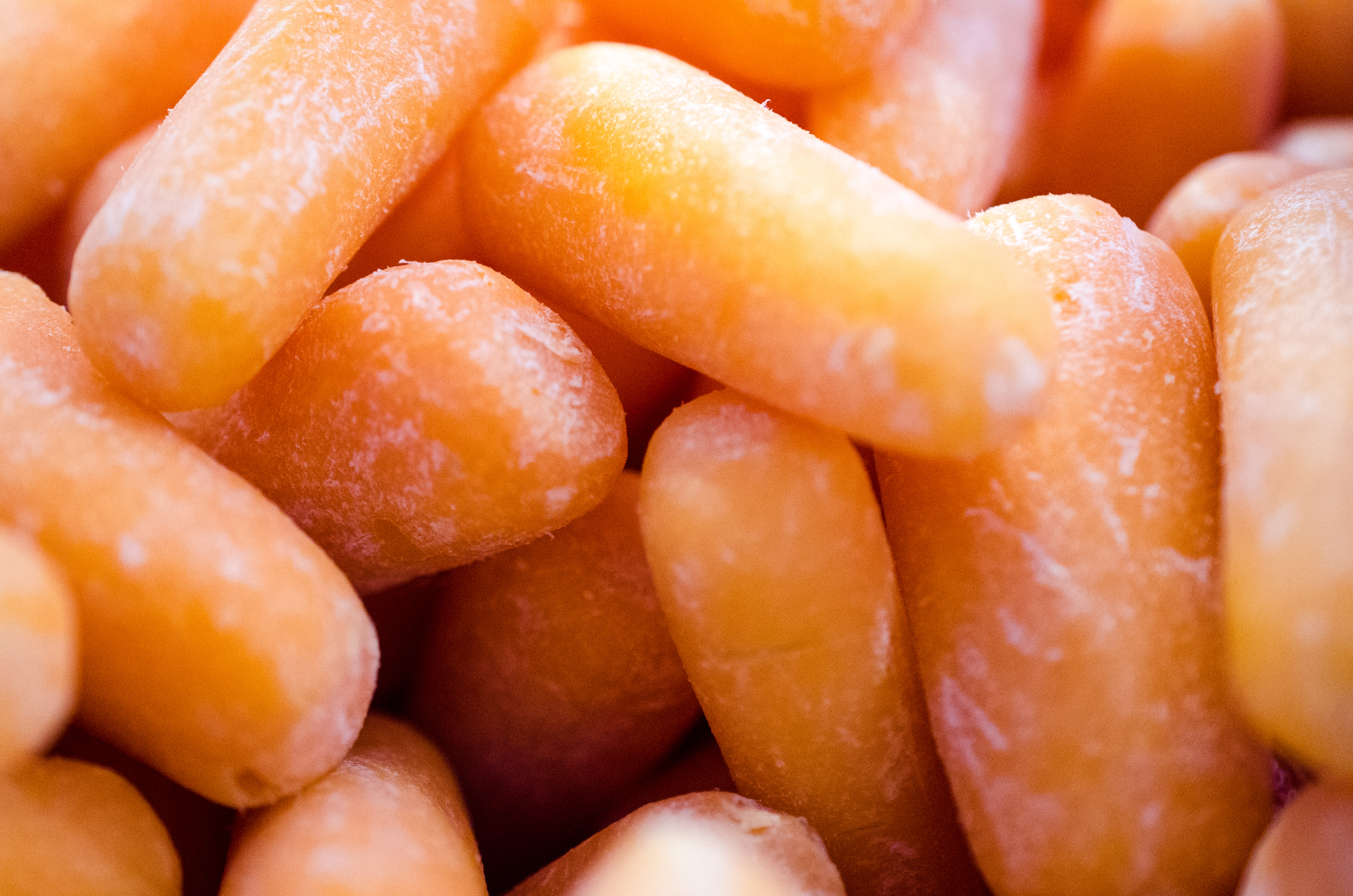Have you ever opened a bag of baby carrots, only to find a strange white film on them? If your first thought is “Ew, is this safe to eat?”—you’re not alone! But rest assured, that white coating is not something to worry about. It’s actually a natural occurrence called “carrot blush”, and it’s completely harmless. Let’s dive into what carrot blush is, why it appears, and whether it has any impact on the safety or taste of your favorite crunchy snack.
What is Carrot Blush?

Carrot blush, also known as “white blush,” is a harmless white film that forms on the surface of baby carrots due to dehydration. When baby carrots lose moisture after being exposed to air, their outer layer roughens, causing light to scatter differently, which gives them that slightly chalky, white appearance. This effect is purely cosmetic and doesn’t affect the carrot’s taste or nutritional value.
Why Do Baby Carrots Get White Blush?
Unlike full-sized carrots, baby carrots don’t have their natural protective skin. Baby carrots are actually peeled and shaped from larger carrots, which removes the outer layer that helps lock in moisture. Without this protective skin, baby carrots are more susceptible to dehydration. As they lose moisture, the surface becomes rougher, leading to the formation of the white blush.
Is the White Film on Baby Carrots Dangerous?
Nope, not at all! The white blush on baby carrots is just a sign that they’ve dried out a bit—it’s completely harmless. This white film is not caused by chemicals or contaminants. In fact, it’s a common misconception that the white film might be chlorine residue. While chlorine is sometimes used to wash and preserve carrots (and other produce), it isn’t responsible for the white blush.
Instead, carrot blush is simply a natural response to dehydration. If anything, it’s a signal that your carrots could use a bit of rehydration to restore their vibrant orange color.
How to Remove Carrot Blush and Revive Your Carrots’ Color
If the white blush on your carrots is bothering you, there’s an easy fix! Here are a few methods to bring back their original orange hue:
- Rinse and Rub: Giving your carrots a quick rinse and gently rubbing them can help reduce the appearance of the white film. This removes any loose particles on the surface, making the carrots look fresher.
- Soak in Water: For a more effective solution, soak your baby carrots in a bowl of cold water for about 15–20 minutes. This allows them to absorb moisture, plumping them up and restoring their original color.
- Refrigerate in Water: If you want to keep your carrots crisp and prevent white blush in the future, store them in the refrigerator submerged in a small container of water. This helps maintain their moisture and keeps them looking fresh.
With a quick soak or rinse, you’ll find that your carrots look as good as new—and they’ll be just as delicious and nutritious as ever!
Does Carrot Blush Mean the Carrots Have Gone Bad?

Not at all. Carrot blush has no bearing on the quality or safety of the carrots. It’s simply an indication that the carrots are slightly dehydrated. As long as the carrots don’t have any slimy texture, foul smell, or visible mold, they’re perfectly fine to eat. So, don’t let a little white blush deter you from enjoying this healthy snack!
The main thing to watch out for with baby carrots is their texture and smell. If they feel slimy or have an unpleasant odor, that’s a sign they’ve started to spoil, and it’s best to discard them. Otherwise, white blush is no reason to throw them out.
Other Examples of Blush on Fresh Produce
Interestingly, carrot blush isn’t the only type of white film that can appear on fresh produce. Here are a couple of other examples you may have noticed:
- Apple Bloom: Have you ever noticed a faint white coating on the surface of an apple? This natural waxy substance, known as bloom, helps protect the fruit from moisture loss and external contaminants. It’s perfectly safe and can even be a sign that your apples haven’t been over-processed.
- Egg Bloom: Fresh eggs often have a thin, powdery white coating on the shell. Known as “egg bloom” or “egg blush,” this protective layer is present on fresh eggs and helps keep bacteria from penetrating the shell. While it can fade over time, it’s completely safe and actually indicates the freshness of the egg.
These examples remind us that blush or bloom is simply a part of the natural process. Far from being harmful, it often acts as a natural defense mechanism that helps protect produce.
How Baby Carrots are Processed and Why They’re Prone to Blush
Baby carrots undergo a unique process before they reach the store shelves. Unlike full-sized carrots, which keep their protective outer layer, baby carrots are created by cutting and peeling full-sized carrots into smaller pieces. This peeling process strips away their natural skin, exposing the surface to air and making them more prone to dehydration and carrot blush.
After peeling, baby carrots are typically washed with a dilute chlorine solution to kill bacteria. While some people worry that chlorine is responsible for the white film, this isn’t the case. The white blush is entirely due to dehydration. And if you’re concerned about chlorine, a quick rinse at home will remove any residual traces.
Enjoy Your Carrots with Confidence!

The next time you see that white film on your baby carrots, remember that it’s nothing to worry about. Carrot blush is a completely natural, harmless occurrence that results from dehydration. With a quick rinse or soak, you can easily bring back their bright orange color and enjoy their crisp, sweet taste without any concerns.
Baby carrots are a great snack, loaded with vitamins, fiber, and antioxidants. So don’t let a little white blush discourage you—enjoy your carrots and all the health benefits they offer!
Conclusion: Embrace the White Blush with Peace of Mind
Carrot blush may look a bit odd, but it’s no cause for alarm. This harmless film is just a reminder that even our food has its own quirks. When you see it, you can rest easy knowing that your carrots are safe to eat and still packed with nutrients. A quick soak in water will bring them back to their vibrant color, but if you’re in a rush, just enjoy them as they are.
So, next time you reach for a bag of baby carrots and notice a little white coating, don’t hesitate. Embrace it, knowing it’s simply a natural part of the carrot’s journey from farm to table. Enjoy your crunchy snack with confidence, knowing that it’s as wholesome and healthy as ever.


